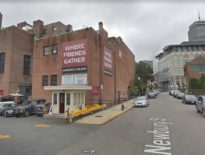What does a heat wave have to do with housing policy? A lot more than you’d think.
Last week, New England got a taste of summers to come if the world’s climate continues on its current, carbon-fueled path.
If state and global greenhouse gas emissions don’t shrink, by 2050 nearly all of Massachusetts – save the mountainous Berkshires and the windy Cape and Islands –will see summer days routinely break 90 degrees, according to a report put out last month by the Union of Concerned Scientists. Between 25 and 50 days per year will cross that mark, and a further 11 to 25 will crack 100. A handful may even break 105. Massachusetts will fry like an egg on the sidewalk when it’s not drowning under coastal flooding or increasingly severe storms.
Public health officials had not released a count of illnesses and deaths caused by last week’s heat by the time Banker & Tradesman went to press, but most heat waves sicken dozens and can even kill people, particularly the elderly and those who don’t have air conditioning in their homes or workplaces.
The news doesn’t get much better if aggressive action is taken worldwide in line with goals listed in the 2015 Paris Agreement, the most far-reaching steps countries have been able to agree on so far. In that scenario, the Union of Concerned Scientists predicts Greater Boston will still see extremely hot days in the same range of frequency, albeit on the lower end, as under the “no action” scenario.
While the state must do many things to prepare for the worsening effects of climate change, and do our part to reduce our own emissions, there is one thing legislators can do right now. They can find an agreement on a package of affordable housing measures that includes the provisions in Gov. Charlie Baker’s Housing Choice bill, which would drop the threshold for most local zoning changes from a two-thirds vote in the relevant body to a simple majority.
Transportation is one of the largest sources of carbon pollution in Massachusetts and the nation. With decades before the private vehicle fleet is mostly electrified, the only sure way to reduce this is by letting communities densify, creating more housing closer to jobs, grocery stores and mass transit.
Unfortunately, many suburban communities don’t allow this kind of multifamily housing, or don’t allow it at sufficient density to be practical in current market conditions. Lowering the threshold for zoning changes, whether to enable a specific project or to pass a thorough overhaul, is key to disempowering the vocal minorities who’ve helped keep a lid on multifamily building so far.
With liberal opposition seemingly holding up Baker’s bill and many other big issues still on the legislature’s plate, it may take a compromise to get its provisions into law in time to help projects already in the pipeline along.
Building anything is a long-term game. To densify as much as possible where it counts, we need to start now.






